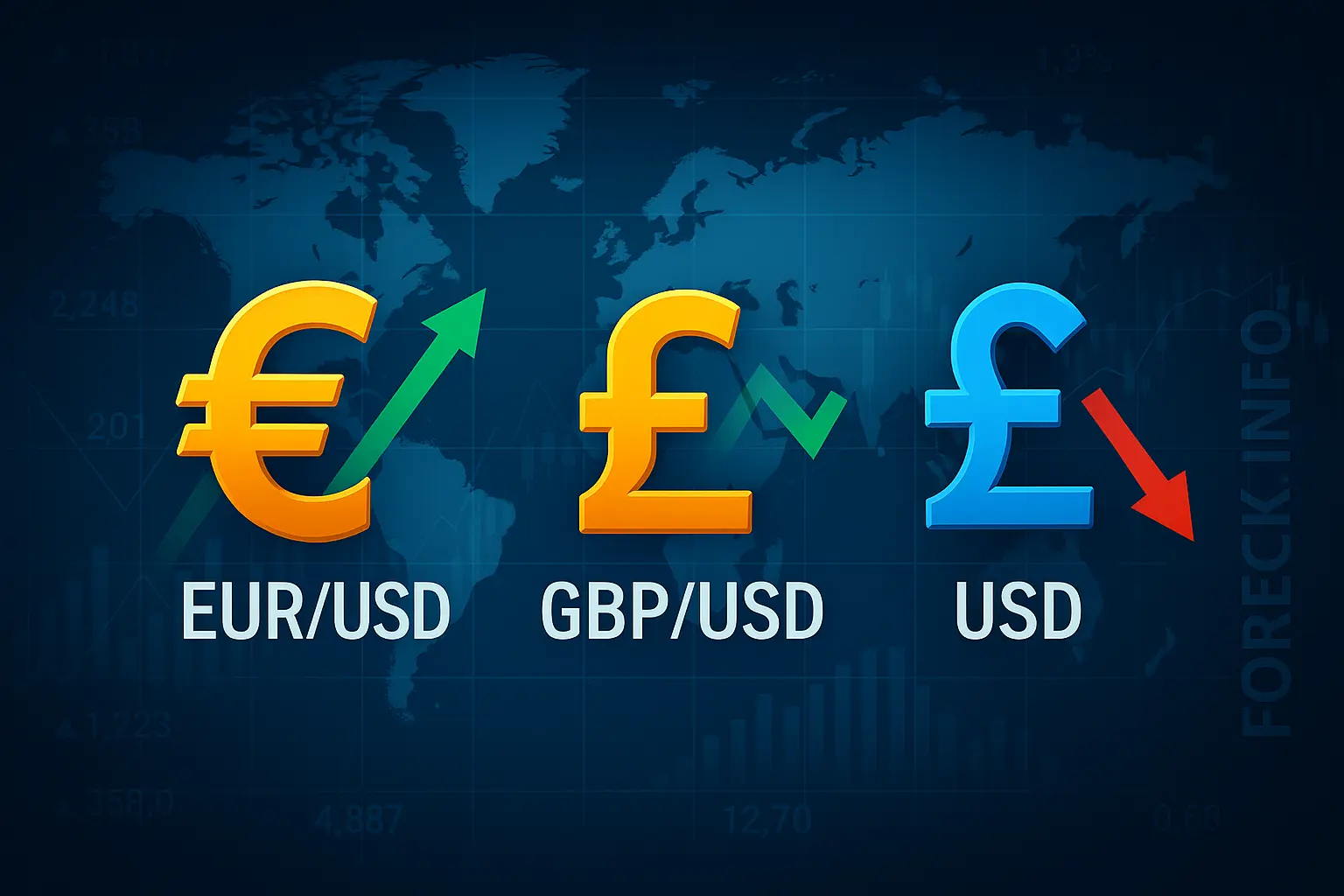The euro continues to build a robust short-term bullish trend against the US dollar, with EUR/USD testing the 1.1680 level for an upward breakout. During the morning session, the pair set new record highs last seen in late September 2021, as the single currency regained upside momentum following reports of an imminent ceasefire deal between Israel and Iran. With geopolitical risks easing, investors have shifted focus back to macroeconomic drivers and central bank outlooks.
This week, Fed Chair Jerome Powell addressed Congress, reiterating that a 25-basis-point rate cut is likely “later this year”—with markets pricing in two cuts (totaling 50 bps) before year-end. By contrast, the ECB is expected to deliver just one 25-basis-point reduction, as eurozone inflation remains subdued and rates are already close to the 2.00% target. Meanwhile, upbeat data from Germany continues to support the euro: June’s IFO business climate index rose from 87.5 to 88.4 (vs forecast 88.3); economic expectations climbed to 90.7 from 88.9 (expected 90.0); and the current assessment edged higher to 86.2 from 86.1.
GBP/USD: Sterling Strengthens as Investors Await UK GDP Data
The pound is posting further gains in the GBP/USD pair, with the morning session seeing a test of the 1.3700 mark—new highs not seen since January 2022. Momentum resumed earlier in the week amid optimism surrounding the end of hostilities between Israel and Iran. President Trump is now reportedly turning his attention to negotiations regarding the Russia–Ukraine conflict, while the imminent expiration of the US import tariff moratorium could reshape global trade if no deal is reached by July 9. In the meantime, UK business activity data released this week continues to underpin the currency: the S&P Global manufacturing PMI climbed from 46.4 to 47.7, services from 50.9 to 51.3, and the composite index from 50.3 to 50.7—all exceeding analyst forecasts.
Investors are closely watching Friday’s UK Q1 GDP update (8:00 GMT+2), with consensus forecasts for no revision—quarterly growth at 0.7%, annual at 1.3%. Key US inflation data (PCE Price Index) is due at 14:30 (GMT+2), with core annual PCE seen ticking up to 2.6% and the broader measure to 2.3%.
AUD/USD: Aussie Recovers Amid Slowing Inflation
The Australian dollar is building a solid bullish impulse against the US dollar, now challenging the 0.6520 level after rebounding from mid-May lows. The pair’s strength is underpinned by softer-than-expected May inflation figures: the ABS consumer price index slowed from 2.4% to 2.1% y/y (consensus 2.3%), reducing pressure on the RBA to tighten policy further. Market expectations for the US Fed have also shifted dovish following Powell’s remarks, pending further developments in summer inflation.
Attention today centers on the final US Q1 GDP reading at 14:30 (GMT+2), expected to show a further 0.2% slowdown, as well as May durable goods orders (+8.5% forecast after -6.3% prior). Unemployment claims are projected at 245,000 initial and 1.95 million continuing.
USD/JPY: Yen Strengthens as US Dollar Retreats
The US dollar is under pressure against the Japanese yen, with USD/JPY testing support at 144.60 after a sharp reversal from mid-May highs. US market participants are awaiting the latest GDP, durable goods, and jobless data later today, all of which may shape near-term dollar sentiment.
On Friday at 01:30 (GMT+2), Japan will release key June macro data: Tokyo CPI ex-fresh food (seen slowing to 3.3% from 3.6%), the national unemployment rate (forecast unchanged at 2.5%), and retail sales (expected to slow to 2.7% from 3.3%). Any downside surprises may weigh on expectations for further Bank of Japan tightening, despite markets still considering a possible 25-bps rate hike as soon as July.
XAU/USD: Gold Consolidates Near $3,330 as Dollar Weakens
Gold (XAU/USD) is consolidating around the $3,330 level during the morning session, recovering slightly from early June lows. Bullion is regaining ground as the US dollar loses strength on receding geopolitical tensions and renewed speculation over Fed rate cuts. With markets now pricing in a 25-bps move at the September FOMC and potentially another by year-end, gold could benefit from a prolonged period of dollar softness and lower real yields.

